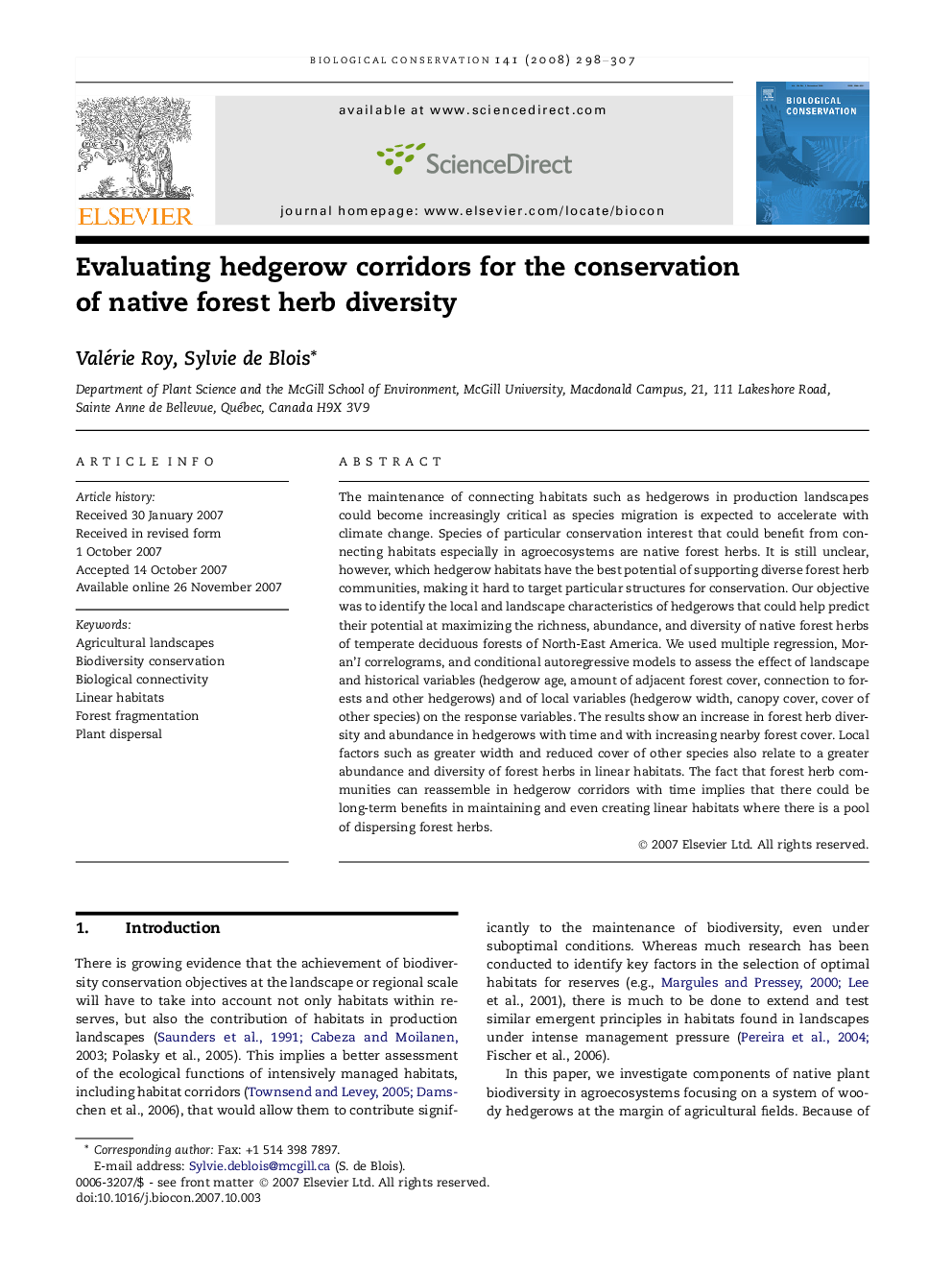| Article ID | Journal | Published Year | Pages | File Type |
|---|---|---|---|---|
| 4386894 | Biological Conservation | 2008 | 10 Pages |
Abstract
The maintenance of connecting habitats such as hedgerows in production landscapes could become increasingly critical as species migration is expected to accelerate with climate change. Species of particular conservation interest that could benefit from connecting habitats especially in agroecosystems are native forest herbs. It is still unclear, however, which hedgerow habitats have the best potential of supporting diverse forest herb communities, making it hard to target particular structures for conservation. Our objective was to identify the local and landscape characteristics of hedgerows that could help predict their potential at maximizing the richness, abundance, and diversity of native forest herbs of temperate deciduous forests of North-East America. We used multiple regression, Moran'I correlograms, and conditional autoregressive models to assess the effect of landscape and historical variables (hedgerow age, amount of adjacent forest cover, connection to forests and other hedgerows) and of local variables (hedgerow width, canopy cover, cover of other species) on the response variables. The results show an increase in forest herb diversity and abundance in hedgerows with time and with increasing nearby forest cover. Local factors such as greater width and reduced cover of other species also relate to a greater abundance and diversity of forest herbs in linear habitats. The fact that forest herb communities can reassemble in hedgerow corridors with time implies that there could be long-term benefits in maintaining and even creating linear habitats where there is a pool of dispersing forest herbs.
Related Topics
Life Sciences
Agricultural and Biological Sciences
Ecology, Evolution, Behavior and Systematics
Authors
Valérie Roy, Sylvie de Blois,
